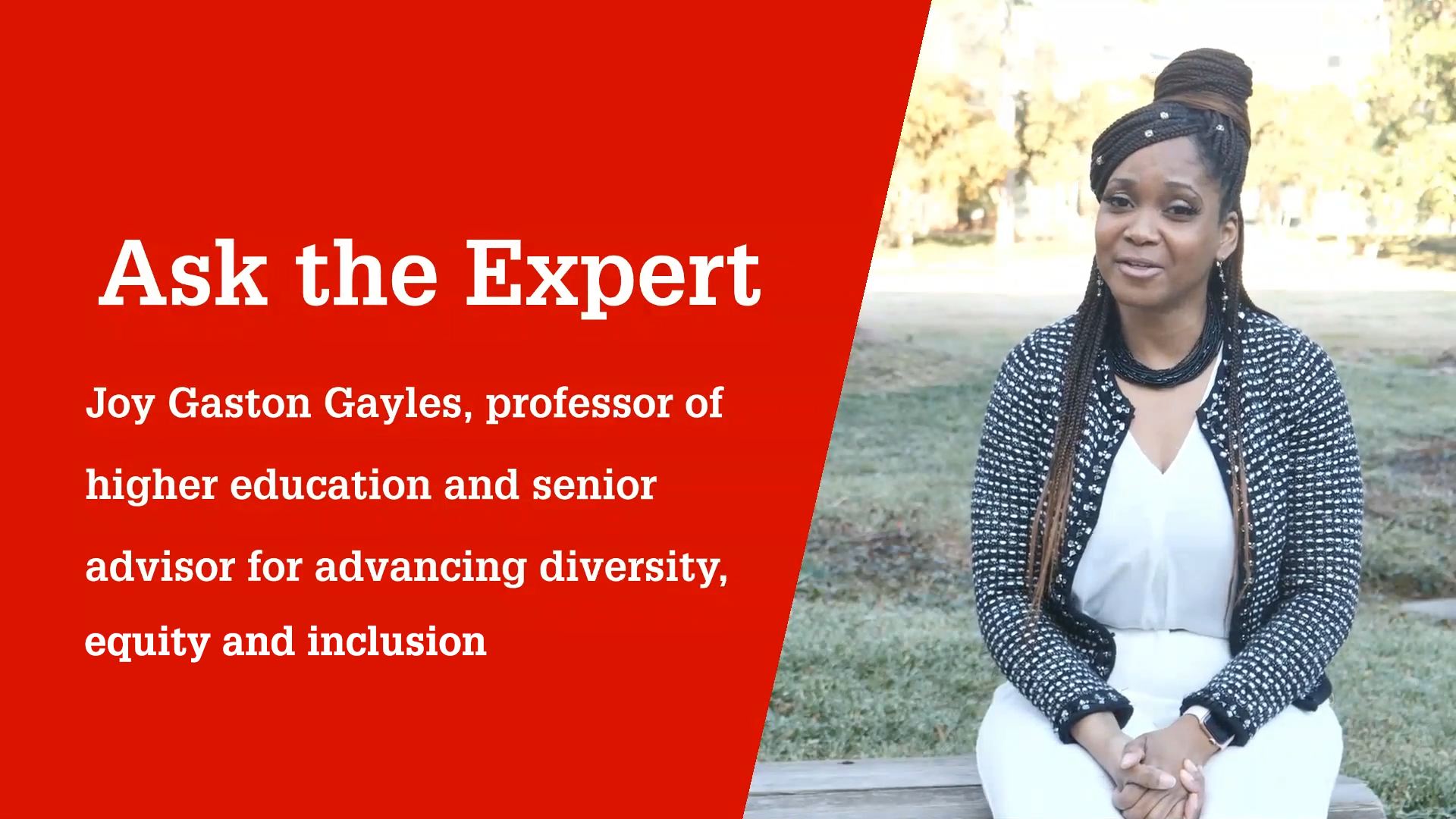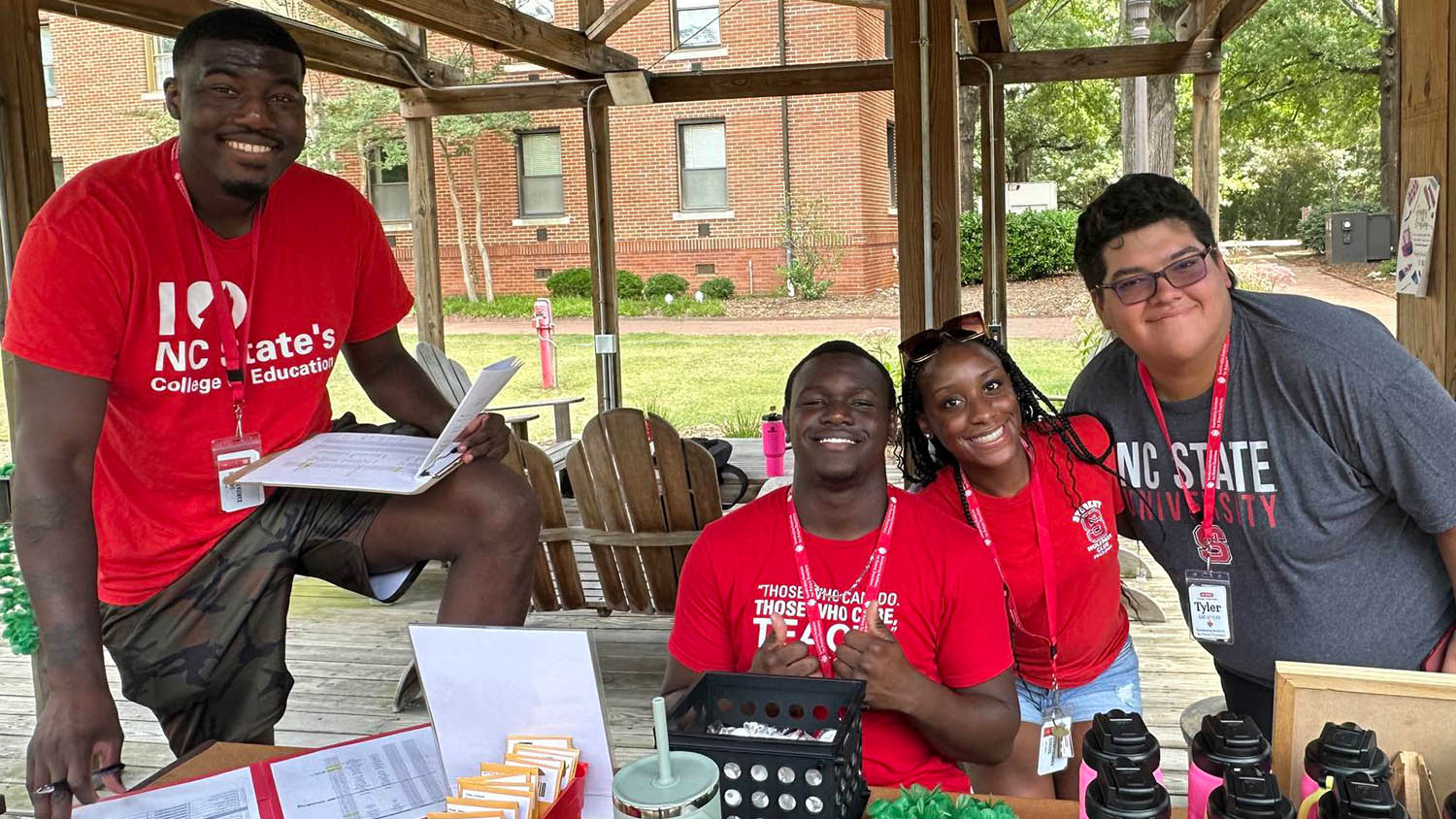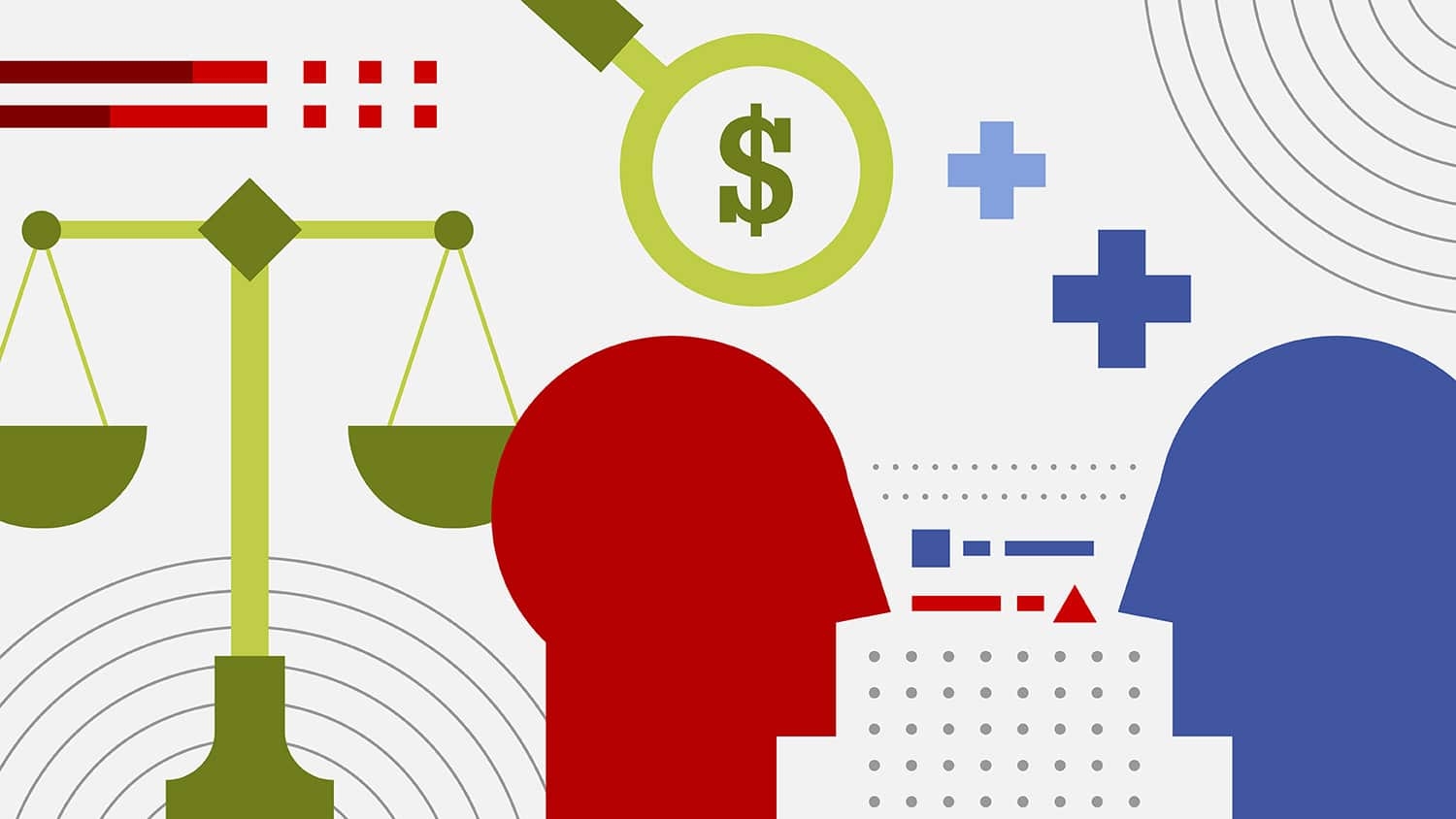Ask the Expert: How Can Educators Help Advance Equity in Schools? ‘We Have to Get Comfortable Being Uncomfortable So That We Can Disrupt, Better Learn and Understand What’s Problematic Within Ourselves and in our Society,’ Says Professor Joy Gaston Gayles
This is part of the monthly “Ask the Expert” series in which NC State College of Education faculty answer some of the most commonly asked questions about education.
Many schools and universities boast a diverse student body, but simply having diversity is not the same as providing an equitable educational experience for students of all backgrounds, says Joy Gaston Gayles, Ph.D., professor of higher education and senior advisor for advancing diversity, equity and inclusion in the NC State College of Education and president-elect of the Association for the Study of Higher Education.
Gayles, who studies access, equity, and success in higher education with a focus on barriers student athletes, women and people of color in STEM fields face and how barriers can be removed to help promote student success, noted that historically minoritized populations often struggle in school because of systems that were not created with their needs in mind.
“We don’t know enough about underserved populations in terms of how we can ensure their educational success,” she said. “While we do a good job with diversity in some cases; however, we don’t do a good job of understanding how and under what conditions different populations learn, grow and thrive. We need more of that kind of data to make better decisions structurally so that everybody can be successful in educational environments.”
Even in diverse environments, Gayles said that students who fall outside of the “mythical norm” — a term used to describe those who hold privileged identities based on their race, gender, socio-economic status, sexual orientation, religion, age and ability group — can often feel a lack of belonging.
In order to meet the needs of these students, educators must ensure they are treated equitably and not simply equally.
Equality, which involves giving everybody the same tools and opportunities across the board, is not the same as equity, Gayles explained. Equity acknowledges that, because of systemic oppression and historical legacies of exclusion, different groups will have different needs and access to the equal resources will not necessarily help to close educational gaps.
“Equity is understanding what their needs are and not making assumptions that their needs are just like everybody else’s,” Gayles said. “It’s really looking at what specific people need and giving them that, even if it may not be equal to what everybody else is getting, to make sure that they’re successful within environments.”
Educators must pay attention to context when examining educational gaps and disparities and hold systems accountable when they are designed in ways that create barriers and problems for those who fall outside the “mythical norm.”
However, although many issues of inequity are embedded within existing systems, Gayles says that these systems are made up of individuals, and so successful equity work must start from within each person.
To begin promoting equity within a classroom or school, educators must first examine their own values, upbringing and assumptions and challenge the ways in which they may be perpetuating and sustaining inequity in conscious and unconscious ways.
“We have to get serious and we have to ask ourselves some very hard questions. Those questions are going to make us vulnerable and uncomfortable,” Gayles said. “We have to get comfortable being uncomfortable so that we can disrupt and better learn and understand what’s problematic within ourselves and in our society and really do the hard work that it’s going to take to dismantle some of this.”
Gayles said that it is important for all people, not just those who are on the margins, to engage in transformational work to promote equity. Transformational work really challenges the status quo and requires those who engage in it to find the courage to take risks that inspire change.
Those who challenge these norms are engaging in anti-racist work, which is different from simply being “not racist,” Galyes said.
Sharing an analogy from Beverly Daniel Tatum, a researcher and author who focuses on issues of race in education, Gayles compared the difference between being anti-racist and “not racist” to using a moving sidewalk or “people mover.”
How racism works can be likened to a people mover, a person who is “not racist” is carried along with the crowd, believing that they are not perpetuating racism even though they are benefiting from privilege along the way. Those who are anti-racist are those who turn around on the people mover and run against the flow of traffic in an attempt to disrupt norms and create a system where people don’t benefit from unearned advantages as a result of their race, gender or other privileged identities in society.
“That’s what a change agent is. The change agent is the person who is turning around on the people mover, running in the opposite direction, because doing that disrupts the people mover. Then, from there, we’re going to have to figure out a way to move forward that is more equitable and just,” she said. “I consider myself to be a change agent because the work that I do, I’m doing it to spark something that’s going to hopefully lead to positive change that’s not just good for people of color, but good for everybody.”
When engaging in transformational or anti-racist work, Gayles notes that everybody will likely make mistakes along the way. When that happens, it is important to acknowledge the mistake, take responsibility for it and learn from it in order to figure out how to move forward differently.
To help make sure mistakes that cause more harm than good happen as infrequently as possible, Gayles said it’s important that those engaging in anti-racist efforts work in community with others who can hold them accountable and provide a series of checks and balances.
Those who engage in equity work should be prepared for a difficult journey that involves dismantling existing structures rooted in racism and discrimination that are deeply embedded in society.
“Racism is so deeply embedded in the fabric of this country, it’s not like we can comb through it and just pick it out,” Galyes said. “We need to pull it apart completely and figure out how to come back together in a way that is good for everybody…and create a more just and more equitable society where everybody can thrive and grow and learn and do all the things that they are so wonderfully designed to do.”
Video by Ryan Clancy
- Categories:



